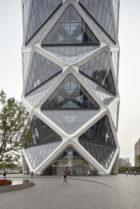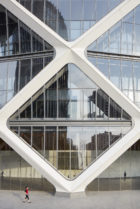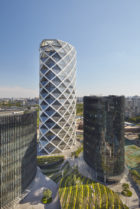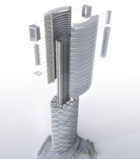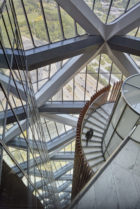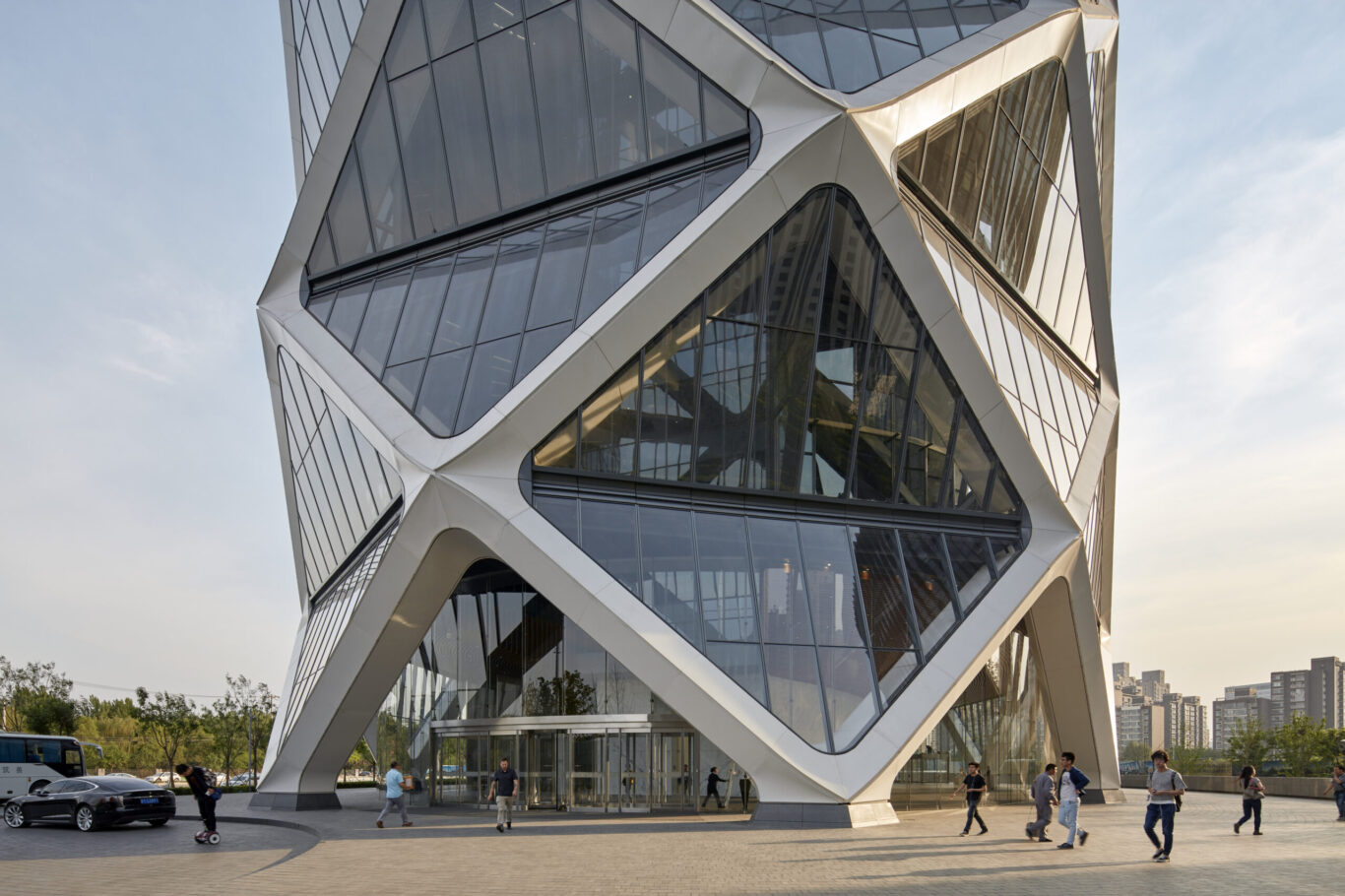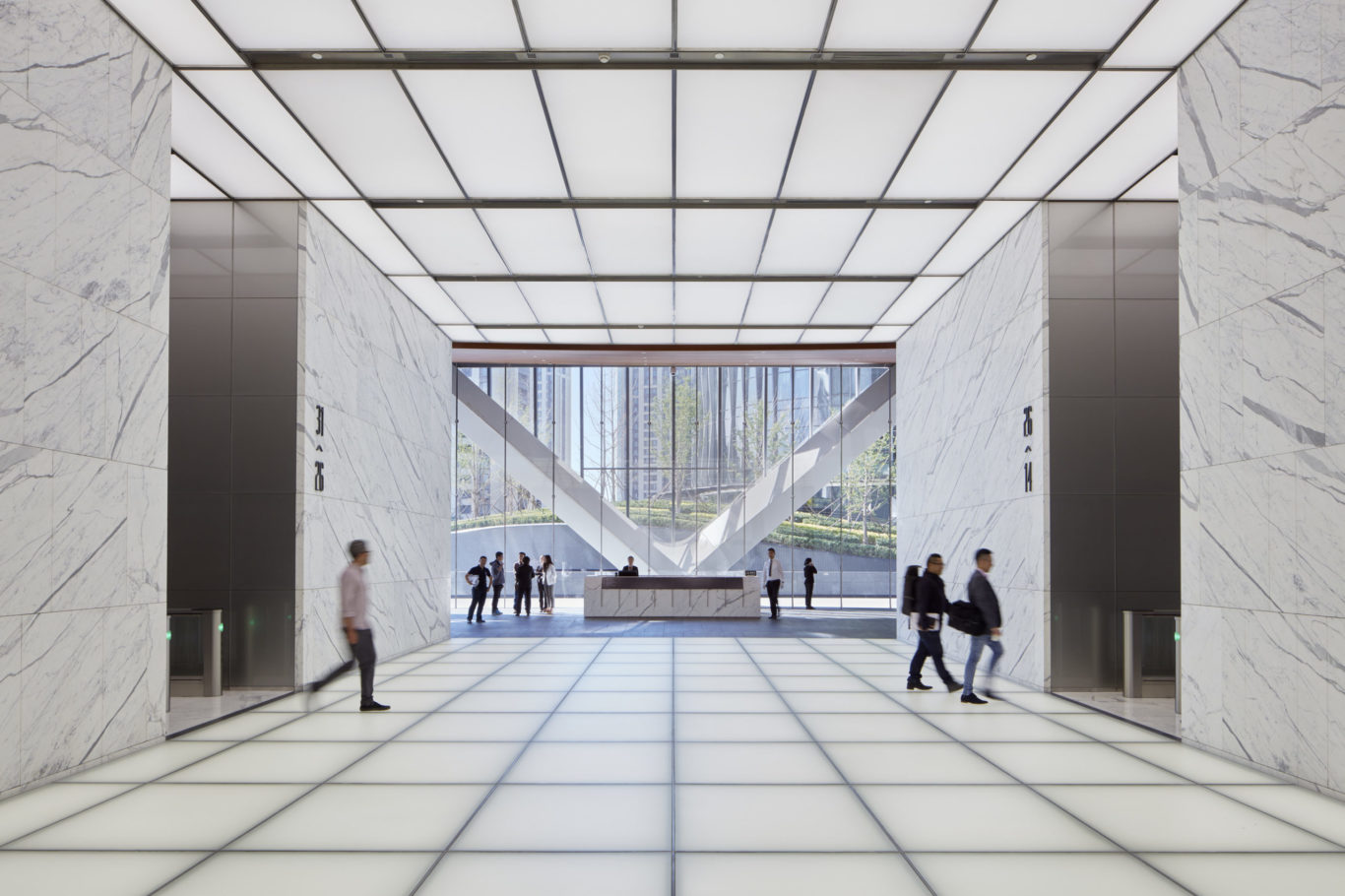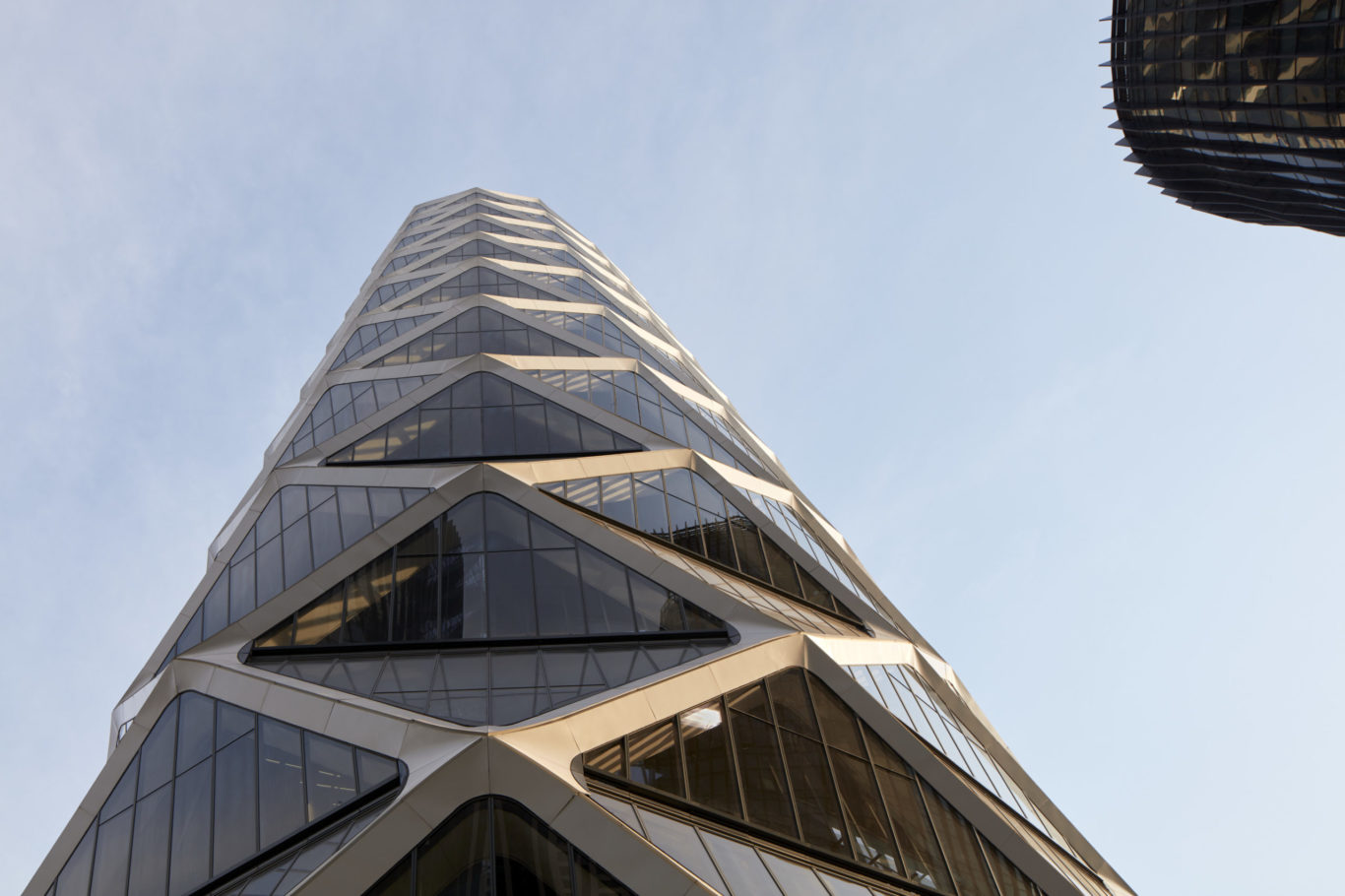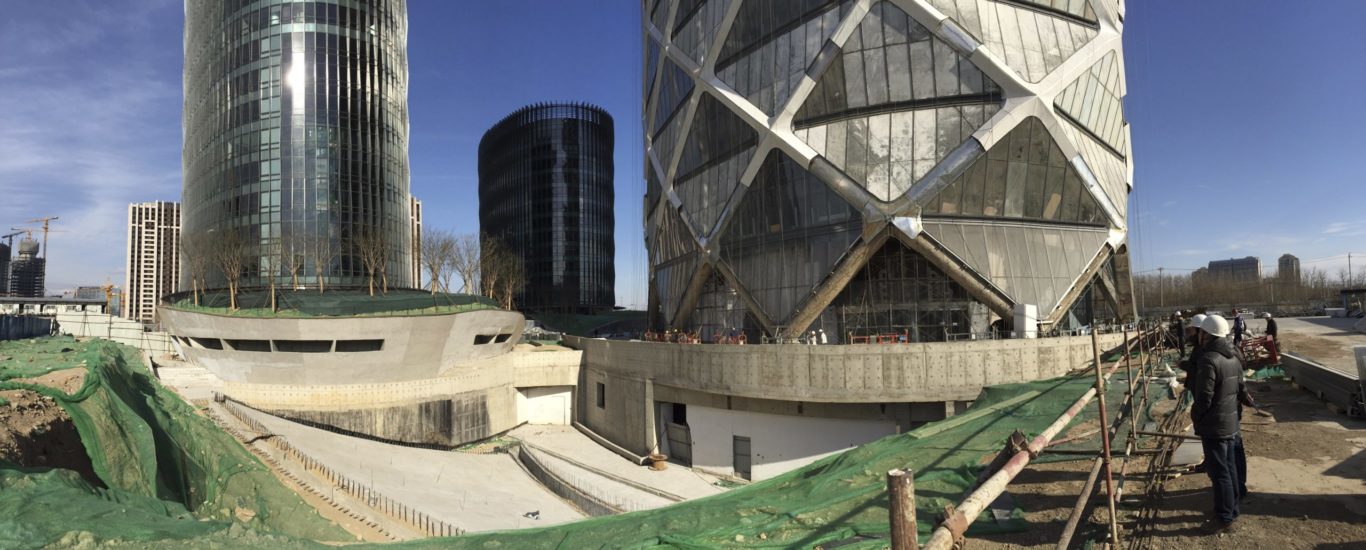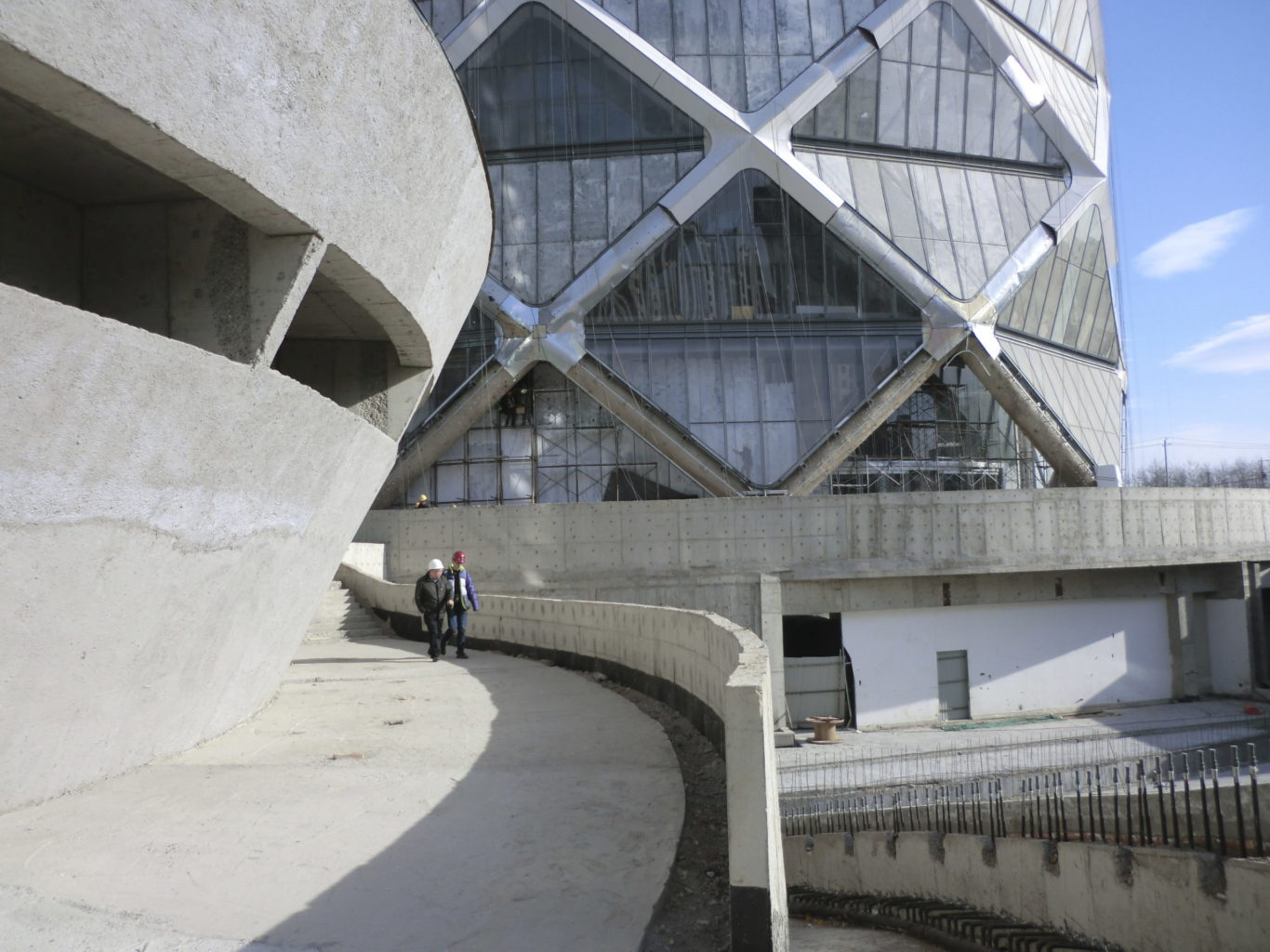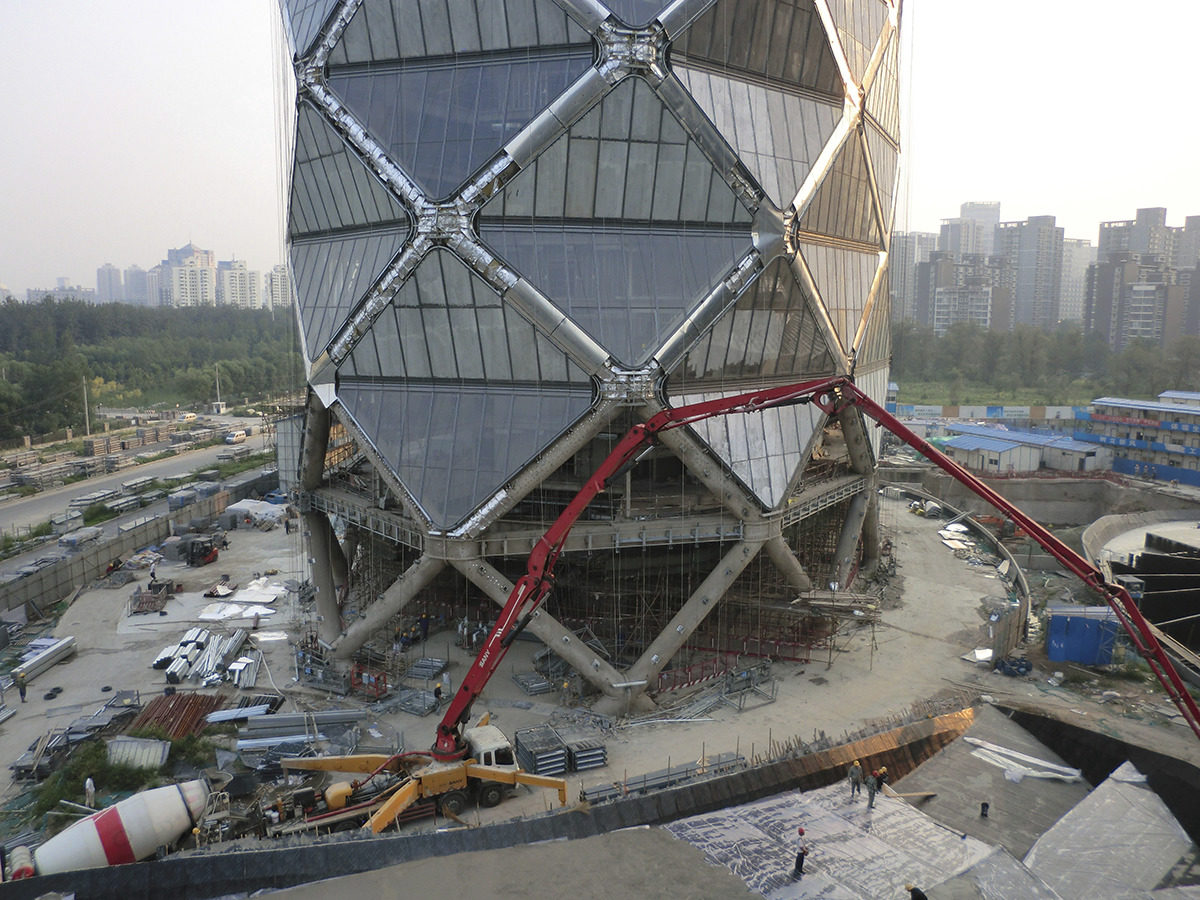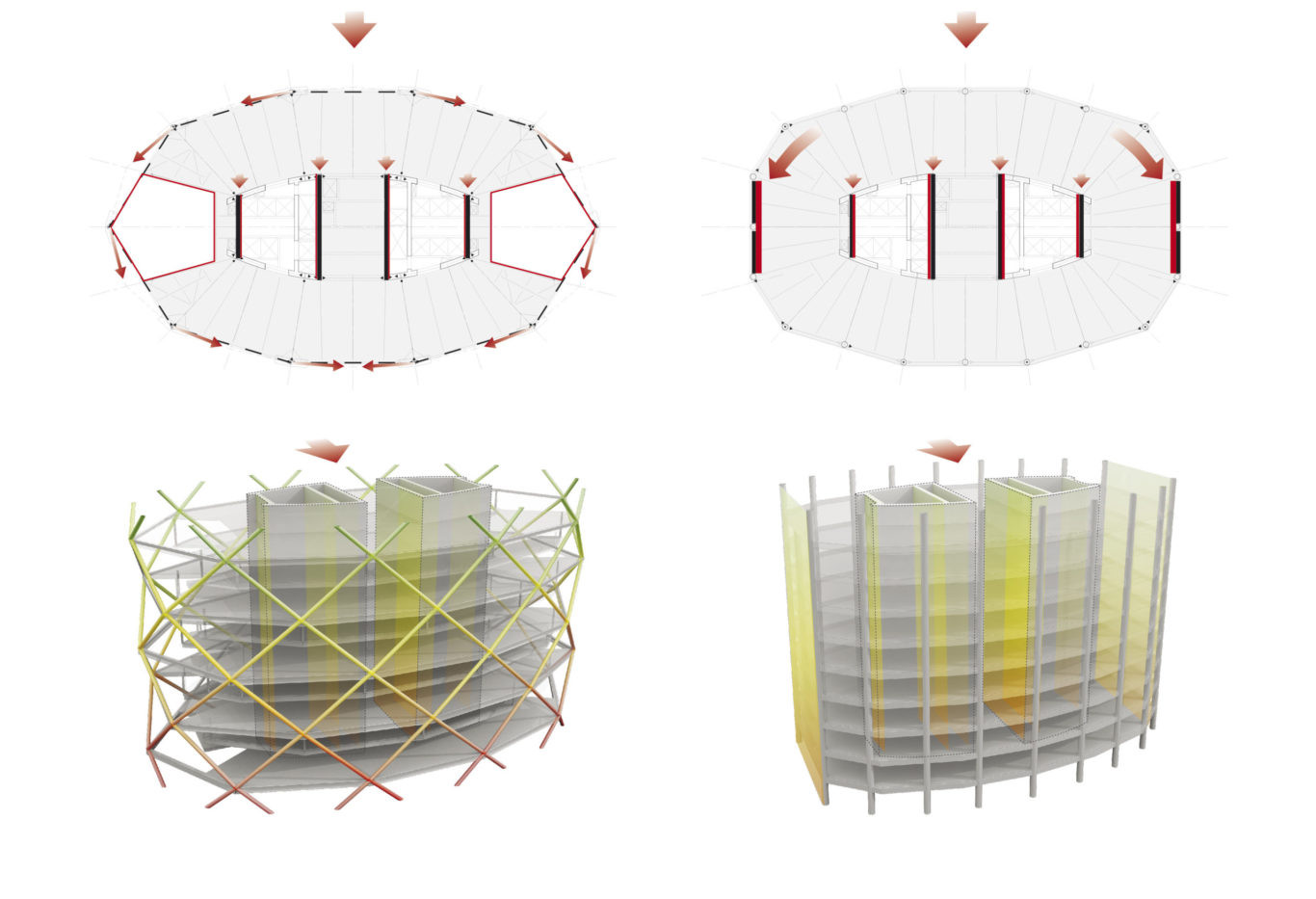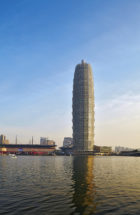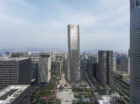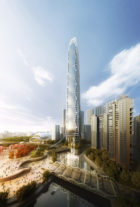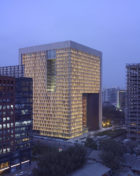Poly International Plaza was envisioned by the China Poly Group as a landmark for the emerging Dawangjing district, a new hub for global business. Its innovative design responds to the geography and climate of Beijing—a region prone to extreme seasonal climate, pollution, and high seismicity.
From its user experience to its environmental impact and construction, the structure sets a new standard for development in the Chinese capital. SOM’s team of interdisciplinary architects and engineers rose to the challenge with a holistic, integrated building design. With a faceted form inspired by traditional Chinese paper lanterns, the tower’s structural system is based on a diagrid. Beyond meeting seismic requirements, this design framework is the cornerstone of the building’s sustainability performance, as well as its distinguishing trait in the Beijing skyline.
